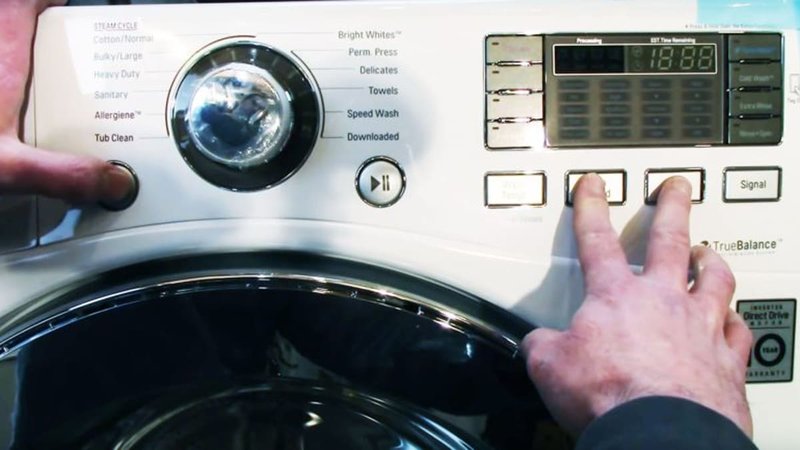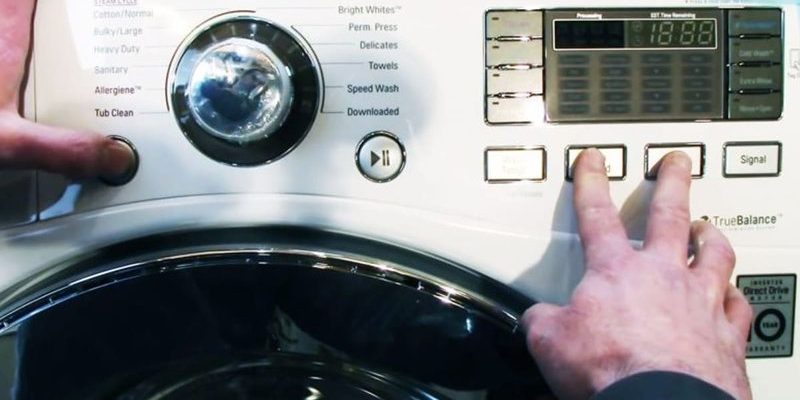
Let’s break it down. The “HE” error code on your Maytag washer usually indicates a water heating issue. This could be for a variety of reasons related to the machine’s ability to heat the water to the desired temperature. Think of it like trying to take a hot shower when the heater’s on the fritz—no fun, right? Let’s dive into the common causes behind this error code and how you might be able to resolve it, even if you’re not a washing machine expert.
Understanding the “HE” Error Code
The “HE” error is all about heating—specifically, the washing machine’s failure to heat water properly. At its core, the washing machine relies on specific temperature settings to ensure your clothes get washed effectively. This code could pop up if the machine can’t reach the required temperature for a wash cycle. Imagine trying to bake a cake without an oven; that’s kind of what your washing machine is dealing with when it can’t get that hot water.
Why is heating so crucial? Detergents often work best at certain temperatures, and some stains dissolve better in warm water. If the machine can’t heat the water, your clothes might not come out as clean as they should. And, it could also mean that something within the machine needs your attention. Identifying the root cause of this error can help maintain the longevity of your washer and ensure it functions correctly.
So, you’ve seen the error code. What now? First, don’t panic. There are several common reasons why this error might be flashing, and with a bit of troubleshooting, you can often figure out what’s going on.
Potential Causes of the “HE” Error Code
One of the main culprits behind the “HE” error is a faulty heating element. This component is like the heart of your washing machine’s heating system. If the heating element is broken or not functioning correctly, the water won’t heat up as it should. It’s similar to when the thermostat on a water heater goes out—you just don’t get the hot water you need.
Another possible cause is an issue with the temperature sensor, sometimes called a thermistor. This sensor detects the water temperature and communicates with the machine’s control board. If it’s malfunctioning, it might send incorrect readings, leading the machine to believe the water is hotter or colder than it really is. Think of it as using a broken thermometer to check if you have a fever—it just doesn’t work right.
There could also be a problem with the water supply. If your home’s water isn’t hot enough, or if there’s an issue with the hot water inlet valve, the machine might not receive the hot water it needs to function. This is akin to expecting a warm cup of coffee from a pot that hasn’t been plugged in—it’s all connected to the source of heat.
What To Do When You See the “HE” Code
So, how do you go about tackling these issues? First, ensure that your home’s hot water supply is working fine. Check if other appliances or fixtures are getting hot water. If not, this issue might be with your water heater, not the washing machine. If your hot water supply is consistent elsewhere, it’s time to focus on the machine itself.
Next, inspect the heating element. Depending on your comfort level with appliance repair, you might need a professional to check this part. They can test the element to see if it’s functioning properly and replace it if necessary. It’s kind of like changing a light bulb—you need to know if the bulb is really burnt out before replacing it.
Lastly, if the heating element is fine, have a look at the thermistor. Again, getting a professional involved can save time and ensure that testing is done accurately. If the sensor is faulty, a replacement will likely resolve the error.
Preventing Future “HE” Errors
Regular maintenance is key to preventing these errors. Consider running a washing machine cleaning cycle every month to keep everything in top shape. This not only prevents the build-up of detergent residue and lime scale but also helps to ensure the heating element remains effective. It’s a bit like keeping your car’s engine clean—maintain it regularly and it won’t let you down unexpectedly.
Also, always be mindful of the settings you’re using. Avoid overloading your machine, as this can strain its components, including the heating element. Think of it as trying to run a marathon with a backpack full of bricks—a heavy load can make the journey tougher.
By understanding the root causes and maintaining your washing machine with care, you can keep those unexpected error codes at bay and ensure your trusty appliance continues to work smoothly for years to come. If ever in doubt, don’t hesitate to call in a professional—they’re like a personal trainer for your washer, ready to solve issues and optimize performance.
